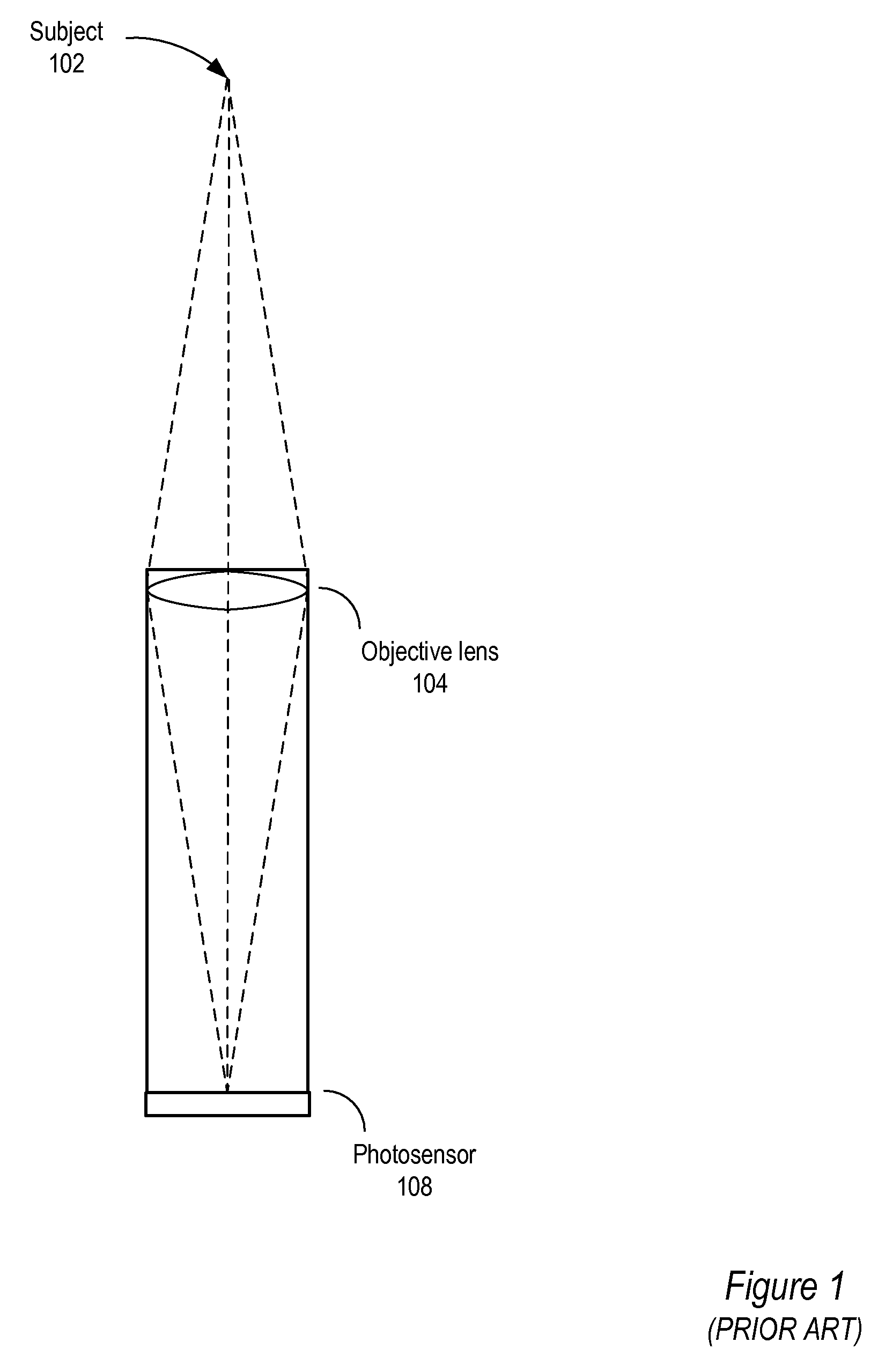Fast Computational Camera Based On Two Arrays of Lenses
a computational camera and array technology, applied in the field of digital cameras and lightfield cameras, can solve the problems of difficult design and construction of fast lenses of quality, high cost, and high cost of solutions, and achieve the effect of less expense and better quality
- Summary
- Abstract
- Description
- Claims
- Application Information
AI Technical Summary
Benefits of technology
Problems solved by technology
Method used
Image
Examples
Embodiment Construction
[0025]Various embodiments of a method and apparatus for a computational camera that incorporates two arrays of lenses are described. Embodiments may provide a fast, light, and relatively inexpensive camera, when compared to conventional cameras, that is based on an optical system that incorporates two arrays of lenses. The two lens arrays include a lenslet array in front of a photosensor such as a Charge-Coupled Device (CCD), and a second array of two or more separate lenses or microlenses that perform as the objective lens. The lens array that replaces the conventional camera objective lens is much thinner and lighter when compared to conventional camera objective lenses, particularly fast objective lenses (lenses with low F / numbers), and in addition may be produced and provided at less expense than conventional fast objective lenses while producing, via post-processing of the raw captured image information, final images that are similar to or better in quality to those produced by...
PUM
 Login to View More
Login to View More Abstract
Description
Claims
Application Information
 Login to View More
Login to View More - R&D
- Intellectual Property
- Life Sciences
- Materials
- Tech Scout
- Unparalleled Data Quality
- Higher Quality Content
- 60% Fewer Hallucinations
Browse by: Latest US Patents, China's latest patents, Technical Efficacy Thesaurus, Application Domain, Technology Topic, Popular Technical Reports.
© 2025 PatSnap. All rights reserved.Legal|Privacy policy|Modern Slavery Act Transparency Statement|Sitemap|About US| Contact US: help@patsnap.com



